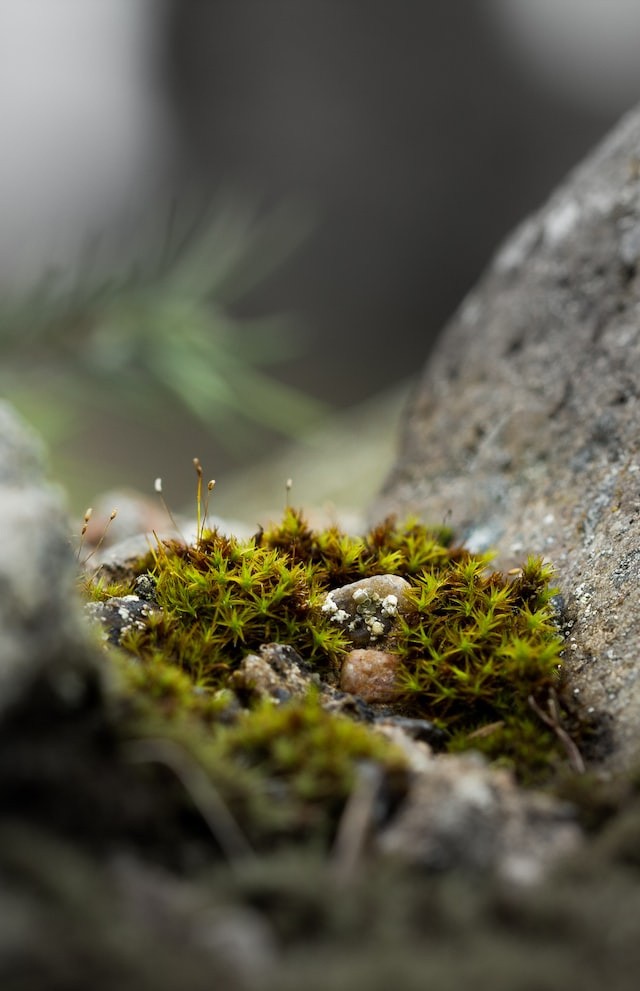Researchers discovered that a "superhero" moss can significantly reduce the risk and severity of flooding for communities living downstream.
Scientists from the conservation organization Moors for the Future Partnership discovered that planting sphagnum moss in upland areas could dramatically slow the rate at which water runs off the hillsides, preventing river catchments from being inundated with water downstream.
'Superhero' moss can save communities

The sphagnum moss was found to reduce peak streamflow - the maximum amount of water that enters a river after a storm - by 65%, as per The Guardian.
The moss was also found to have a 680% increase in lag time (the time between rainfall and rainwater entering the river system).
More than 50,000 individual sphagnum plants, about the size of a 50p coin, were planted as part of an "outdoor laboratory" for researchers to observe on Kinder Scout, the highest point in the Peak District national park.
Before the moss was planted on Kinder, the hill's surface was bare peat, which meant that after a storm, rainwater would wash straight off, putting communities in downstream valleys at risk of flooding.
Sphagnum moss planting could thus provide significant environmental benefits.
Because the plant can absorb up to 20 times its own weight in water, more rainwater can be held upstream and enter a river catchment more gradually, preventing it from being overwhelmed.
Sphagnum moss can also help protect the layers of peat beneath it, and it can accumulate over time to form new layers of peat that are necessary for carbon storage.
The benefits of planting sphagnum moss, according to researchers, will be amplified over time as the plant grows, and moss planting has the potential to bring global benefits in terms of climate, water quality, and flood severity.
The results were "startling," according to Tom Spencer, a research and monitoring officer for the Moors for the Future Partnership, who lauded the moss's dramatic effects on the river catchment.
He believed sphagnum planting could be a powerful tool for reducing the risk and severity of flooding, with far-reaching benefits for communities downstream.
Helen Noble, chief executive of South Pennines Park, echoed that sentiment, saying the findings are fantastic news for the communities in the South Pennines that are most vulnerable to flooding.
Read More: Study: How Moss Helped in Making the Earth Habitable
Sphagnum Moss
Sphagnum moss is one way to keep potted plants moist, and its stringy, fibrous nature makes it an appealing option for hanging baskets, as per The Spruce.
However, there is some confusion about the distinction between sphagnum moss and peat moss (sometimes referred to as sphagnum peat moss).
Although the origins of these two popular soil amendments are similar, how and why you would use each differ.
Sphagnum moss and peat moss are technically the same plants because they are both members of the larger genus Sphagnum moss. The difference between the two is how they are harvested.
The dead moss debris from the bottoms of bogs and wetlands where sphagnum moss grows is collected to make peat moss.
This means that the dead moss is mixed with decayed plant and insect material, making it extremely rich in organic nutrients.
Sphagnum moss is harvested from still-living moss on the surface of bogs and wetlands. After harvesting, these chunks of living plant material are dried, resulting in a pure chunk of sphagnum moss rather than a mixture of dried material.
Sphagnum moss is useful for a variety of gardening and crafting purposes; however, its higher cost and less diverse organic matter make it a better fit for specialty purposes.
It's frequently used to make a Kokedama (a moss ball planter), for seed starting, as a planting medium for orchids, as a potting soil amendment, for lining baskets, and for other art projects.
When growing succulents or orchids indoors, sphagnum moss is commonly used.
It is light and holds a lot of moisture. It does not become overly soggy, however, which means your plant is less likely to suffer from root rot.
Depending on the plant, it may be used alone or in combination with soil or another potting medium.
Sphagnum moss does not hold a lot of nutrients, so watering may need to be more frequent, and fertilizers may be needed.
Related Article: Mysterious Green Slime Oozes Out of Utah Drain
© 2025 NatureWorldNews.com All rights reserved. Do not reproduce without permission.





